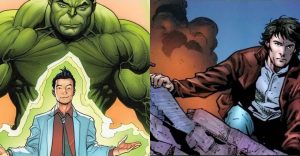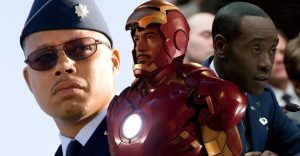No Time To Die Makes A 1960s Era Bond Movie More Likely

Caution: spoilers ahead for No Time To Die
Does No Time To Die put wheels in motion for setting Eon’s next spate of James Bond movies in the 1960s? With 60 years of history behind it, there’s precious few “firsts” for the James Bond franchise here in 2021. Nevertheless, No Time To Die leaves Eon (custodians of 007’s cinematic legacy) a headache they avoided in decades past. In previous eras, the transition from one James Bond actor to another was seamless. Such switches were never addressed onscreen (George Lazenby’s “other chap” jibe aside), and supporting actors (your Ms, Qs, Moneypennys, etc.) often stayed on to serve multiple Bonds.
Until now, Eon has got away with pretending every James Bond era is one never-ending story with no explicit “reset” between actors. That isn’t going to fly now Daniel Craig has hung up his Walther PPK. Not only did Casino Royale–No Time To Die tell a more self-contained story than the James Bond incarnations of yore, but Craig’s final film took the rather bold step of killing 007 at the end, leaving Eon no choice but to consider the kind of hard-reset they always managed to skirt around. Maybe Bond 26 simply picks up like No Time To Die‘s ending didn’t happen. Perhaps the next James Bond movie explains 007’s resurrection in-canon (cloning has been mentioned by writers). Another option is changing Bond and his time period.
Setting the next era of James Bond movies in the 1960s – the decade Ian Fleming conceived the character to exist within – would provide a clean break from the Daniel Craig series, both in tonal and canon terms. Quibbles over continuity would vanish, and the vintage aesthetic neatly contrasts the relentless modern sheen of James Bond‘s recent output. Though Eon hasn’t yet confirmed what 007’s future will look like, No Time To Die‘s futuristic plot surely increases the odds of Bond 26 being a 1960s throwback.

Daniel Craig’s James Bond movies peddle an incredibly grounded brand of espionage. Stripping back on the gadgets and unrealistic villain plots, Casino Royale, Quantum of Solace, Skyfall and Spectre all root themselves in a world of gritty realism that couldn’t have felt further from the infamous invisible cars of 2002’s Die Another Day. Strangely, No Time To Die shakes off those restraints and steers Daniel Craig once again into the fantastical and futuristic territory more commonly associated with Pierce Brosnan or Roger Moore. No Time To Die‘s main threat is the Heracles virus – a programmable killer nanobot disease that infects via a single touch. Though the Iron Man tech is No Time To Die‘s most obvious sci-fi addition, there’s also the folding plane, Blofeld’s eye, and gravity-defying magnets – all touches that wouldn’t have been caught dead in Casino Royale.
No Time To Die‘s robotic Heracles virus takes James Bond as deep into futuristic fiction as 007 can comfortably tread in 2021, leaving no room for Bond 26 to up the ante. James Bond stands upon the edge of suspension of disbelief, leaving the next film two equally uninviting choices – continue No Time To Die‘s trajectory and risk making Bond ridiculous again, or back off and retread the same path as Daniel Craig’s movies. Avoiding the dilemma entirely, a 1960s James Bond movie series offers the best of both worlds. The concealed suitcase rifles and Thermos grenades would seem cutting-edge to a spy in the Swinging Sixties, but look quaint to a 2020s viewer, giving the impression of being futuristic… without actually testing the limits of believability whatsoever.
Dulling down any sci-fi undertones is just one of many benefits a 1960s setting would bring to Bond 26, and No Time To Die going so uncharacteristically hard on advanced technology and fringe science makes a return to Ian Fleming’s humble era even more appealing. The 1960s is where the James Bond concept was born, and enough time has passed to make that period fresh again. Add in modern production, address the outdated societal values, and Bond 26: Vintage Edition can be the perfect antidote to No Time To Die‘s nanobot nuttiness.
About The Author

















